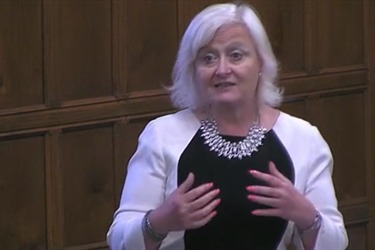
Last week, Siobhain spoke about the importance of community policing in London and Mitcham & Morden.
In recent years, the model of community policing in London has changed. Since 2008 the Metropolitan Police has lost 23% of dedicated neighbourhood uniformed officers in London boroughs and more than 2,400 Police Community & Support Officers since 2010 alone, and it has closed 63 police stations due to the £600 million of budget cuts over the past four years.
Speaking in a debate organised by Karen Buck MP, Siobhain spoke with many other MPs about how the previous safer neighbourhoods policing model which focused upon community relationships and the development of local knowledge, has been declining in recent years. It was argued that there is a need to return to ward-based and even sergeant-led neighbourhood policing to restore declining public confidence in community policing.
You can watch Siobhain’s speech online here (
fast forward to 12:14) or read her speech below.
‘As with clothes and interior design, there are fashions in policing, and we are seeing a backlash against the current fashion. What is happening is not just about money, although money may be the principal cause, but about the fact that some in policing circles simply did not believe in the community policing model—the one sergeant, two PCs and three PCSOs model—as set out by Ken Livingstone when he was Mayor and by a number of Labour Home Secretaries, because it “de-policed” the police. However, it actually enhanced what the police could do, particularly in areas that are more financially challenged and that have more people who are excluded. We began to witness more people willing to talk to the police than ever before.
With those increasing police numbers came more police bases. There is a huge issue about the enormous waste of money that has resulted from closing local offices that were opened in order to place safer neighbourhood teams at the heart of their community. In my constituency, Mitcham and Morden, we have seen the closure of the Lavender Fields and Graveney team office in Wilson Avenue, which must have taken thousands of pounds to open to standards that the Metropolitan police accept.
Pollards Hill is a ward right on the outskirts of Mitcham and Morden, bordering Croydon and Lambeth. People there feel out on a limb and excluded from their local area, and the police office there showed a real investment in their community. People felt that the police were close to them and dealing with the problems they face. I am sad to say that some of those problems relate to gangs and stabbings. We do not have the same level of such problems as other hon. Members will in their constituencies, but the fact that that office is no longer there for people to turn to when issues arise is a real problem for that community. Again, there is the issue of the costs involved in opening these offices and then closing them, leaving memorials to a police system that worked a great deal better than it does currently. That is really sad.
There is an idea that we can point to crime figures and say, “Crime is down, so it’s okay.” However, if we consider confidence in policing, and we look at the figures for the fear of crime in my borough of Merton, we see that about two thirds of people now fear crime, when the figure was once the lowest in London. Mitcham has 41% of the crimes that take place in the borough, but 68% of people fear crime—the fact that people can no longer see their police officers has tripled the numbers.
When there was a stabbing in Pollards Hill, where would people go? They would go first to the police officer or the PCSO at the local high school. We can be pretty sure that within hours those officers would have had a very good idea of how the incident came about and who was involved. That would then allow the police response teams—Trident or whoever—to go into action and to deal with the issue.
When we have our police meetings, some in the police—I suppose this is out of frustration at their situation—tell residents, “You don’t have a crime problem here. Crime is not high. You live in one of the safest boroughs in London.” That really does not wash if someone has seen a young man stabbed outside their kitchen window. Although people can absolutely rationalise that that would never happen to them as a middle-aged woman, an older dad or a young child, they have seen it happening in their neighbourhood and they want it dealt with. Their fear is for themselves, their children and their neighbourhood. When they know that the police office that used to be open behind their homes is no longer there, there is a real and severe feeling that, given the level of policing in their area, the possibility of dealing with these issues becomes less.
When we combine that with local authority cuts in youth services, we get a maelstrom. In Pollards Hill, in Merton, we do not have a huge youth service. The Pollards Hill youth centre was due to close in April this year. Luckily, we brought people together to build an alliance to keep it open. However, I suspect that, in areas more challenged than mine, a combination of police cuts, youth service cuts and the inability of services to take young people away from crime will create a legacy that will be with us for a long time. That will not save any more money, and it will cause far more challenges for many more vulnerable people.’